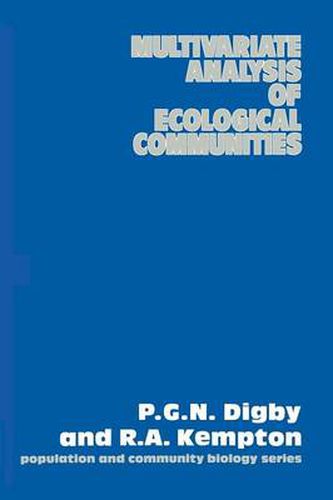Readings Newsletter
Become a Readings Member to make your shopping experience even easier.
Sign in or sign up for free!
You’re not far away from qualifying for FREE standard shipping within Australia
You’ve qualified for FREE standard shipping within Australia
The cart is loading…






This title is printed to order. This book may have been self-published. If so, we cannot guarantee the quality of the content. In the main most books will have gone through the editing process however some may not. We therefore suggest that you be aware of this before ordering this book. If in doubt check either the author or publisher’s details as we are unable to accept any returns unless they are faulty. Please contact us if you have any questions.
This text brings together many techniques of multivariate analysis appropriate for ecological data. The techniques include the familiar, and some less familiar, methods for ordination and classification, and also some special techniques (for example, methods for analyzing asymmetric association matrices and for comparing several different ordinations). A key is provided to assist in choice of methods. A particular strength of the book lies in the numerous illustrative examples. The book should be of interest to statistical courses for biologists, ecologists and general scientists.
$9.00 standard shipping within Australia
FREE standard shipping within Australia for orders over $100.00
Express & International shipping calculated at checkout
This title is printed to order. This book may have been self-published. If so, we cannot guarantee the quality of the content. In the main most books will have gone through the editing process however some may not. We therefore suggest that you be aware of this before ordering this book. If in doubt check either the author or publisher’s details as we are unable to accept any returns unless they are faulty. Please contact us if you have any questions.
This text brings together many techniques of multivariate analysis appropriate for ecological data. The techniques include the familiar, and some less familiar, methods for ordination and classification, and also some special techniques (for example, methods for analyzing asymmetric association matrices and for comparing several different ordinations). A key is provided to assist in choice of methods. A particular strength of the book lies in the numerous illustrative examples. The book should be of interest to statistical courses for biologists, ecologists and general scientists.